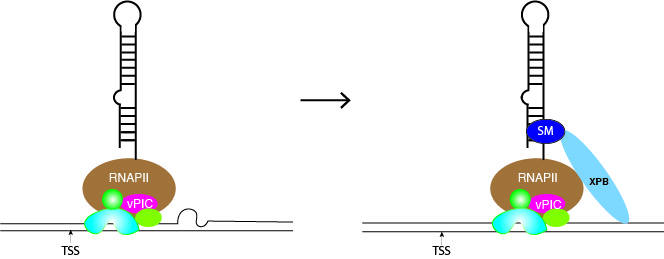
Epstein–Barr virus (EBV) is a human herpesvirus associated with clinical infections and several types of malignancies. Sankar Swaminathan, MD, and colleagues showed that a hypertension/heart failure drug, spironolactone, also has anti-EBV effects. The antiviral activity of spironolactone is not related to its mineralocorticoid blocking activity relevant to hypertension/heart disease, but, instead, to its ability to inhibit the function of a protein SM that is essential for EBV replication. In the first demonstration of its kind, this research also showed that EBV SM protein activates viral gene transcription by utilizing xeroderma pigmentosum group B-complementing protein (XPB) as a cofactor.
This is the first demonstration that XPB is utilized as an essential cofactor by a human herpesvirus. The XPB protein is degraded by spironolactone. Therefore, XPB may be a useful therapeutic target to control EBV and other human herpesviruses. Further, because the SM protein acts at stages of the viral life cycle different from those targeted by available therapies, these observations pave the way for the development of novel anti-EBV drugs that address emerging drug resistance and toxicity problems.

References:

Spironolactone blocks Epstein–Barr virus production by inhibiting EBV SM protein function. Verma D, Thompson J, Swaminathan S. Proc Natl Acad Sci U S A. 2016 Mar 29;113(13):3609. Published online 2016 Mar 14. doi: 10.1073/pnas.1523686113

Epstein–Barr virus co-opts TFIIH component XPB to specifically activate essential viral lytic promoters. Verma D, Church TM, Swaminathan S. Proc Natl Acad Sci U S A. 2020 June 9;117(23):13044. doi: 10.1 /pnas.2000625117
